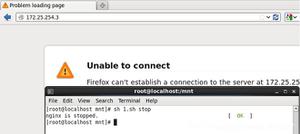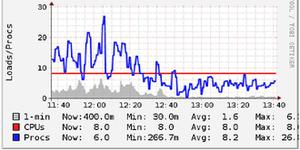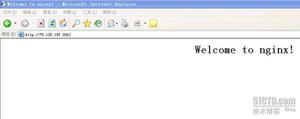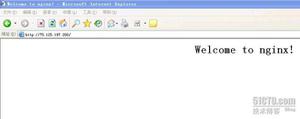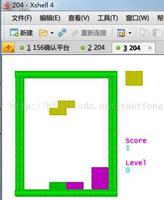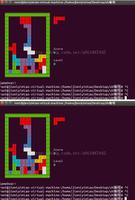关于单链表实现的一个stack的问题
背景:菜鸟一枚,想补补基础。最近在看算法 ,1.3.26有一道题是:编写一个方法remove()接受一条链表和一个字符串key作为参数,删除链表中所有的item域为key的节点。
,1.3.26有一道题是:编写一个方法remove()接受一条链表和一个字符串key作为参数,删除链表中所有的item域为key的节点。
上代码:
public class Stack<Item> implements Iterable<Item> { private Node<Item> first; // top of stack
private int n; // size of the stack
// helper linked list class
private static class Node<Item> {
private Item item;
private Node<Item> next;
}
/**
* Initializes an empty stack.
*/
public Stack() {
first = null;
n = 0;
}
/**
* Returns true if this stack is empty.
*
* @return true if this stack is empty; false otherwise
*/
public boolean isEmpty() {
return first == null;
}
/**
* Returns the number of items in this stack.
*
* @return the number of items in this stack
*/
public int size() {
return n;
}
/**
* Adds the item to this stack.
*
* @param item
* the item to add
*/
public void push(Item item) {
Node<Item> oldfirst = first;
first = new Node<Item>();
first.item = item;
first.next = oldfirst;
n++;
}
/**
* Removes and returns the item most recently added to this stack.
*
* @return the item most recently added
* @throws NoSuchElementException
* if this stack is empty
*/
public Item pop() {
if (isEmpty())
throw new NoSuchElementException("Stack underflow");
Item item = first.item; // save item to return
first = first.next; // delete first node
n--;
return item; // return the saved item
}
/**
* Returns (but does not remove) the item most recently added to this stack.
*
* @return the item most recently added to this stack
* @throws NoSuchElementException
* if this stack is empty
*/
public Item peek() {
if (isEmpty())
throw new NoSuchElementException("Stack underflow");
return first.item;
}
/**
* Returns a string representation of this stack.
*
* @return the sequence of items in this stack in LIFO order, separated by
* spaces
*/
public String toString() {
StringBuilder s = new StringBuilder();
for (Item item : this)
s.append(item + " ");
return s.toString();
}
// 1.3.20
public void delete(int k) {
// 不允许大于n的值
if (k <= n) {
Node<Item> nowNextNode = first;
// 要第几个就next到第几个的上一个
for (int i = 1; (k - 1) != i; i++) {
nowNextNode = nowNextNode.next;
}
// 删除节点
Node<Item> needLinePoint = nowNextNode.next.next;
nowNextNode.next = needLinePoint;
} else {
// 这里简单的打印一下
StdOut.print("!------------------删除元素越界!------------------!");
}
}
// 1.3.21
public boolean find(String key) {
// 其实也可以用foreach
Node<Item> nowNode = first;
while (true) {
if (nowNode.item.equals(key)) {
StdOut.print("output : true");
return true;
// 链表没有下一个了
} else if (first.next.equals(null)) {
StdOut.print("output : false");
return false;
}
nowNode = nowNode.next;
StdOut.println("then next~");
}
}
// 1.3.24
public void removeAfter(Node<Item> node) {
if (node == null || node.next == null) {
// 什么也别做
} else {
if (isEmpty())
throw new NoSuchElementException("Stack underflow");
Node<Item> tempNode = node.next.next;
node.next = null;
node.next = node.next.next;
n--;
}
}
//1.3.26 接受一个链表和一个字符串key作为参数,删除链表中所有item域为key的节点
// 那么为了降低难度,直接写成对this产生作用的方法
public void remove(String key) {
//首先肯定是一个能够不停next直到没有的循环
//第二个就是要时时刻刻记住上一个节点,这样便于移除现在的节点
//然后就是对等于key和不等于key的逻辑判断
//先判断nowNode.next == null,如果是,说明已经到了尾部,结束循环
//相等:移除节点,上一个节点还是原先的上一个节点,但会连接至“被移除节点”的next,继续循环
//不相等:frontNode变更为nowNode,继续循环
Node<Item> nowNode = first;
Node<Item> frontNode = null;
while(true){
if (nowNode.next.equals(null)){
StdOut.print("没有拥有该字符串的item");
break;
}else if (nowNode.item.equals(key)){
frontNode.next = nowNode.next;
nowNode.next=null;
nowNode = frontNode.next;
StdOut.print("已搜索到该字符串!");
}else {
frontNode = nowNode;
nowNode = nowNode.next;
}
}
}
/**
* Returns an iterator to this stack that iterates through the items in LIFO
* order.
*
* @return an iterator to this stack that iterates through the items in LIFO
* order
*/
public Iterator<Item> iterator() {
return new ListIterator<Item>(first);
}
// an iterator, doesn't implement remove() since it's optional
private class ListIterator<Item> implements Iterator<Item> {
private Node<Item> current;
public ListIterator(Node<Item> first) {
current = first;
}
public boolean hasNext() {
return current != null;
}
public void remove() {
throw new UnsupportedOperationException();
}
public Item next() {
if (!hasNext())
throw new NoSuchElementException();
Item item = current.item;
current = current.next;
return item;
}
}
}
但是一经测试就报java.lang.NullPointerException,为什么?
详细错误:
java.lang.NullPointerException at Unit1.Stack.remove(Stack.java:168)
at Unit1.StackTest.Test(StackTest.java:19)
at sun.reflect.NativeMethodAccessorImpl.invoke0(Native Method)
at sun.reflect.NativeMethodAccessorImpl.invoke(Unknown Source)
at sun.reflect.DelegatingMethodAccessorImpl.invoke(Unknown Source)
at java.lang.reflect.Method.invoke(Unknown Source)
at org.junit.runners.model.FrameworkMethod$1.runReflectiveCall(FrameworkMethod.java:50)
at org.junit.internal.runners.model.ReflectiveCallable.run(ReflectiveCallable.java:12)
at org.junit.runners.model.FrameworkMethod.invokeExplosively(FrameworkMethod.java:47)
at org.junit.internal.runners.statements.InvokeMethod.evaluate(InvokeMethod.java:17)
at org.junit.runners.ParentRunner.runLeaf(ParentRunner.java:325)
at org.junit.runners.BlockJUnit4ClassRunner.runChild(BlockJUnit4ClassRunner.java:78)
at org.junit.runners.BlockJUnit4ClassRunner.runChild(BlockJUnit4ClassRunner.java:57)
at org.junit.runners.ParentRunner$3.run(ParentRunner.java:290)
at org.junit.runners.ParentRunner$1.schedule(ParentRunner.java:71)
at org.junit.runners.ParentRunner.runChildren(ParentRunner.java:288)
at org.junit.runners.ParentRunner.access$000(ParentRunner.java:58)
at org.junit.runners.ParentRunner$2.evaluate(ParentRunner.java:268)
at org.junit.runners.ParentRunner.run(ParentRunner.java:363)
at org.eclipse.jdt.internal.junit4.runner.JUnit4TestReference.run(JUnit4TestReference.java:86)
at org.eclipse.jdt.internal.junit.runner.TestExecution.run(TestExecution.java:38)
at org.eclipse.jdt.internal.junit.runner.RemoteTestRunner.runTests(RemoteTestRunner.java:459)
at org.eclipse.jdt.internal.junit.runner.RemoteTestRunner.runTests(RemoteTestRunner.java:678)
at org.eclipse.jdt.internal.junit.runner.RemoteTestRunner.run(RemoteTestRunner.java:382)
at org.eclipse.jdt.internal.junit.runner.RemoteTestRunner.main(RemoteTestRunner.java:192)
测试里相关的代码:
public class StackTest { @Test
public void Test() {
Stack<String> stack = new Stack<String>();
while (!StdIn.isEmpty()) {
String item = StdIn.readString();
if (item.equals("find")) {
stack.find("3");
}
else if (item.equals("remove")) {
stack.remove("1");
}
else if (item.equals("del")) {
stack.delete(3);
}
else if (!item.equals("-")) {
stack.push(item);
}
else if (!stack.isEmpty()) {
StdOut.print(stack.pop() + " ");
}
}
StdOut.println("(" + stack.size() + " left on stack)");
}
}
报错行是stack里的
if (nowNode.next.equals(null)){以及测试里的
stack.remove("1");但是我认为一楼的答案并不是很好...找到空指针的引用后,就向前找这个引用的初始化的逻辑部分。
初始化部分:
Node<Item> nowNode = first; Node<Item> frontNode = null;
我很同意授人鱼不如授人以渔。然而...
StdIn是一个能够不停输入的函数。
测试数据输入的是
1
2
3
4
5
remove
感谢各位!问题似乎已经解决了!附上代码:
public void remove(String key) { // 首先肯定是一个能够不停next直到没有的循环
// 然后就是对等于key和不等于key的逻辑判断
// 先判断nowNode== null,如果是,说明已经到了尾部,结束循环。同样nowNode.next == null也是
Node<Item> nowNode = first;
while (true) {
if (nowNode == null ) {
StdOut.println("搜索结束");
break;
}
if (nowNode.item.equals(key)) {
StdOut.println("已搜索到该字符串!");
if (nowNode.next == null){
StdOut.println("已到达底端,退出!");
break;
}
//删除节点操作
//临时存储的对象:直接让nextNode和nowNode交换
Node<Item> nextNode ;
nextNode = nowNode.next;
nowNode.item = nextNode.item;
nowNode.next = nextNode.next;
nextNode = null;
}
else {
nowNode = nowNode.next;
}
}
}
回答:
之前在外面,这个问题本身不算有趣,一楼很有趣,还有赞他的人们,有2个。
恐怕是单单一句授人鱼不如授人以渔。引起了赞同,在lz这样类伸手党的问题下特别容易引发共鸣。找到空指针的引用后,就向前找这个引用的初始化的逻辑部分。这句话有点误导的作用。
最后贴上来的代码也是醉了..题意都没看清,first.next.equals(null)这样的代码也是不想吐槽了。
能不能干点实在的事情?哪怕像2楼@hsfzxjy一样
那么先来说说错误,就没人发现这个错误吗?
nowNode.next.equals(null)xxx.equals(null)和xxx == null
区别就是,如果程序能正常运行下去的话
xxx.equals(null)一定只能返回false
xxx == null可能返回true,也可能返回false
因为如果xxx是null的话
xxx.equals(null)会抛出NullPointerException
xxx == null返回true
然后是逻辑问题
在最后一个key的时候,下一个next为null
于是在
else if (nowNode.item.equals(key)){ frontNode.next = nowNode.next;
nowNode.next=null;
nowNode = frontNode.next;
StdOut.print("已搜索到该字符串!");
}
frontNode.next会指向null,nowNode会被指向null。
对你的代码进行了改良:
public void remove(String key) { // 首先肯定是一个能够不停next直到没有的循环
// 第二个就是要时时刻刻记住上一个节点,这样便于移除现在的节点
// 然后就是对等于key和不等于key的逻辑判断
// 先判断nowNode.next == null,如果是,说明已经到了尾部,结束循环
// 相等:移除节点,上一个节点还是原先的上一个节点,但会连接至“被移除节点”的next,继续循环
// 不相等:frontNode变更为nowNode,继续循环
Node<Item> nowNode = first;
Node<Item> frontNode = null;
while (true) {
n++;
if (nowNode == null ) {
StdOut.print("搜索结束");
break;
}
if (nowNode.item.equals(key)) {
StdOut.print("已搜索到该字符串!");
// 删除节点的操作
//但是第一次就找到关键字就SB了,frontNode直接为空
frontNode.next = nowNode.next;
// 如果nowNode是最后一个,frontNode也会指向null
if (frontNode.next == null ) {
StdOut.print("搜索结束");
break;
}
nowNode.next = null;
nowNode = frontNode.next;
}
else {
frontNode = nowNode;
nowNode = nowNode.next;
}
}
}
根据你的思路实现的,留了一个问题给你。
另外,我数结算法这一块不是很6。如果答案不能令你满意还请多多包涵。
回答:
当 first 为目标时,161 行 frontNode.next 会报错
当 链表为空 时,157 行 和 167 行 nowNode.next 会报错
骚年不行啊,为什么不单步跟踪一下
回答:
——————————补充内容——————————————————
补充一下:== 符号是比较的是等号两边的变量的值,所以在用来比较两个对象引用时,比较的就是连个引用的内存地址。equals方法确实能够用来比较引用里面具体内容。
比如
String str1 = new String("123");String str2 = new String("123");
str1 == str2;//这个值就是false了,虽然内容都是“123”,比较的是两个引用地址。
str1.equals(str2);/这个就是true
所以==只在判断是否为null时用就好,其余时候,能用equals方法最好还是用equals,必经java绝大部分变量都是引用类型。
——————————————————————————————————————————
题主更新过了,这是remove部分的修改
判断为空时不要用xxx.equls(null)的形式,xxx也可能是空。以后直接用 == 符号判断或者自定义一个boolean isEmpty(Object o)的工具方法
public void remove(String key) { //首先肯定是一个能够不停next直到没有的循环
//第二个就是要时时刻刻记住上一个节点,这样便于移除现在的节点
//然后就是对等于key和不等于key的逻辑判断
//先判断nowNode.next == null,如果是,说明已经到了尾部,结束循环
//相等:移除节点,上一个节点还是原先的上一个节点,但会连接至“被移除节点”的next,继续循环
//不相等:frontNode变更为nowNode,继续循环
Node<Item> nowNode = first;
Node<Item> frontNode = null;
while(true){
//栈为空的时候,这里会报错,先判断栈是否为空
//nowNode为空是结束循环
if (isEmpty()||nowNode == null){
StdOut.print("没有拥有该字符串的item");
break;
}else if (nowNode.item.equals(key)){//链表进行增删改查,在链子的首,尾,中间的算法是不同的,要分开来处理
if(nowNode.next == null) {//目标是结尾元时,
frontNode.next = nowNode.next;
nowNode = frontNode;
} else if(frontNode == null) {//目标是首元素时
first = nowNode.next;
nowNode.next = null;
} else { //目标是和中间元素时
frontNode.next = nowNode.next;
nowNode.next=null;
nowNode = frontNode.next;
}
StdOut.print("已搜索到该字符串!");
break;
}else {
frontNode = nowNode;
nowNode = nowNode.next;
}
}
}
————————————————————————————————旧的更新——————————————————————————————————————
还是大致看了一下。
public boolean find(String key) { Node<Item> nowNode = first;
while (true) {
//这里加上一行健壮性判断。栈空了就不要继续遍历了
//nowNode为空也要结束循环
if(isEmpty()||nowNode == null)
return false;
if (nowNode.item.equals(key)) {
System.out.print("output : true");
return true;
// 链表没有下一个了
} else if (first.next.equals(null)) {
System.out.print("output : false");
return false;
}
nowNode = nowNode.next;
System.out.println("then next~");
}
}
————————————————一下原文————————————————————————————————————————————————
授人鱼不如授人以渔。
报错后,java.lang.NullPointerException继续往下看,找到第一个包含有你的类的包名的那一行,那一行后面的数字就是你出错的行数。
找到空指针的引用后,就向前找这个引用的初始化的逻辑部分。
以上是 关于单链表实现的一个stack的问题 的全部内容, 来源链接: utcz.com/p/168925.html



